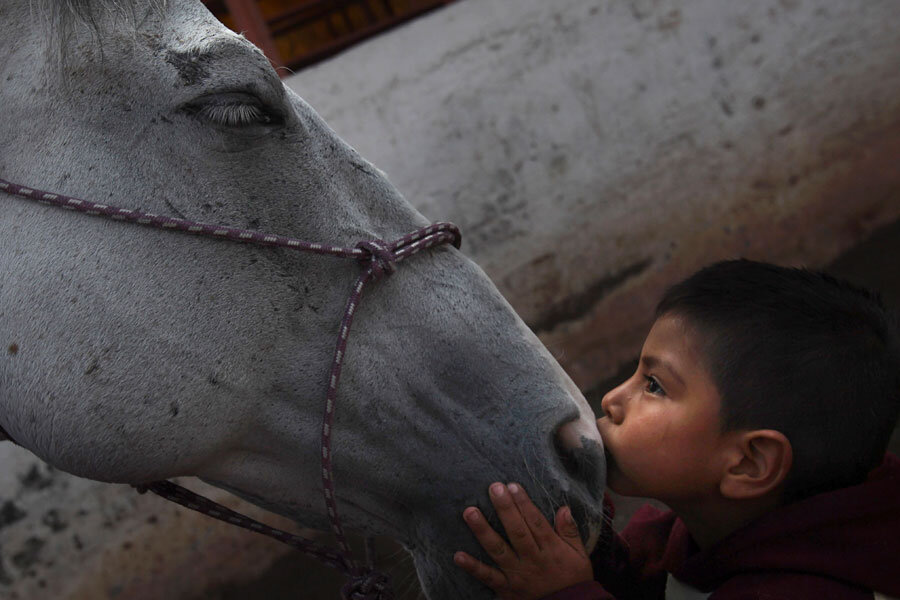How did we domesticate horses? Genetic study yields new evidence.
Loading...
| New York
Speed, smarts, and the heart of a champion: using genomic analysis, scientists have identified DNA changes that helped turn ancient horses such as those in prehistoric cave art into today's Secretariats and Black Beautys, researchers reported Monday.
Understanding the genetic changes involved in equine domestication, which earlier research traced to the wind-swept steppes of Eurasia 5,500 years ago, has long been high on the wish list of evolutionary geneticists because of the important role that taming wild horses played in the development of civilization.
Once merchants, soldiers and explorers could gallop rather than just walk, it revolutionized trade, warfare, the movement of people and the transmission of ideas. It also enabled the development of continent-sized empires such as the Scythians 2,500 years ago in what is now Iran.
It was all made possible by 125 genes, concluded the study in Proceedings of the National Academy of Sciences.
Related to skeletal muscles, balance, coordination, and cardiac strength, they produced traits so desirable that ancient breeders selected horses for them, said geneticist Ludovic Orlando of the Natural History Museum of Denmark, who led the study. The result was generations of horses adapted for chariotry, pulling plows, and racing.
Genes active in the brain also underwent selection. Variants linked to social behavior, learning, fear response, and agreeableness are all more abundant in domesticated horses.
The discovery of the genetic basis for horse domestication was a long time coming because no wild descendants of ancient breeds survive. The closest is the Przewalski's horse. By comparing domesticated species to their wild relatives, scientists figured out how organisms as different as rice, tomatoes and dogs became domesticated.
With no truly wild horses to study, Orlando's team examined DNA from 29 horse bones discovered in the Siberian permafrost and dating from 16,000 and 43,000 years ago, and compared it to DNA from five modern domesticated breeds.
Some genes in today's horses were absent altogether from the ancient ones, showing they arose from recent mutations. Among them: a short-distance "speed gene" that propels every Kentucky Derby winner.
Geneticists not involved in the study suggested that analyzing equine DNA from around the time of domestication, rather than millennia before, might show more clearly what genetic changes occurred as horses were tamed.
"Comparing ancient genomes to modern genomes is tricky," said Arne Ludwig of the Leibniz Institute for Zoo and Wildlife Research in Berlin.
(Editing by Grant McCool)





